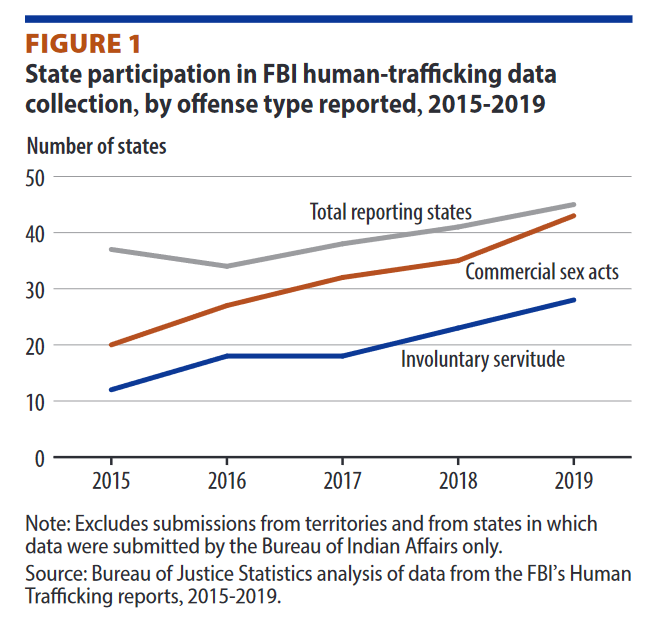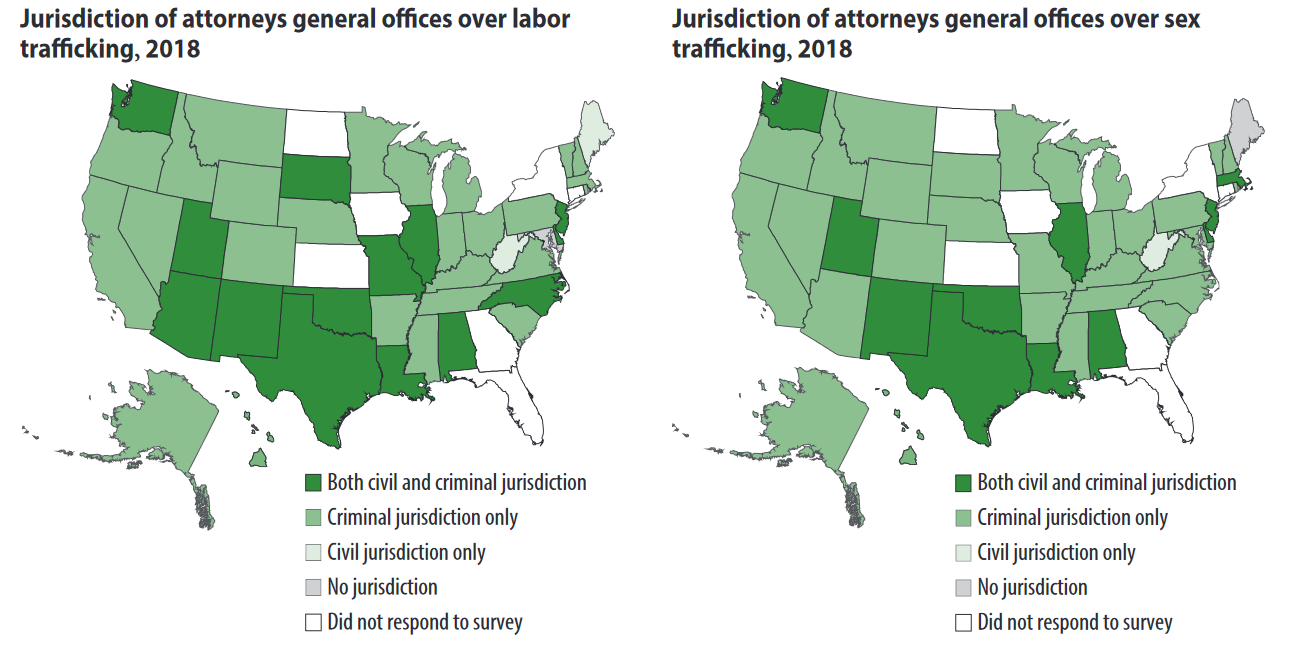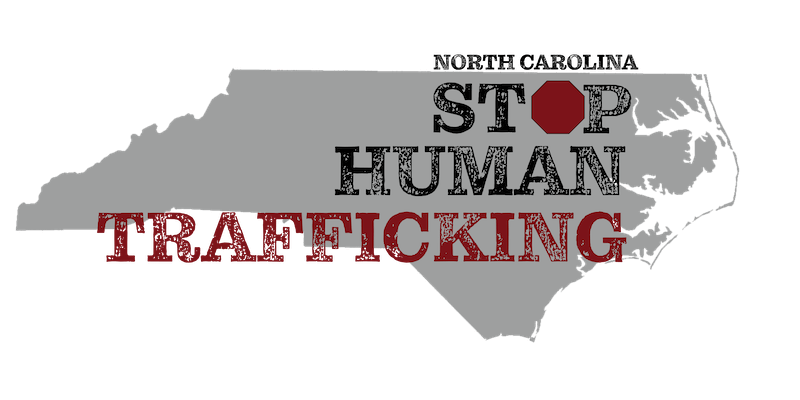
The U.S. Department of Justice’s Bureau of Justice Statistics (BJS) recently released the annual “Human Trafficking Data Collection Activities” report highlighting up and coming data collection initiatives that have the potential to give a more accurate snapshot of what human trafficking looks like in the United States.
It is understood that human trafficking data collection is not cohesive across the country or even within states. These new data collection initiatives have the potential to provide a more accurate snapshot of the scope and prevalence of human trafficking, which is historically been miscategorized, overlooked or underreported.
Currently the FBI uses the Uniform Crime Reporting Human Trafficking (UCR-HT). Law enforcement agencies use its record management system to document human trafficking incidents that then get reported to the state, then the state sends that information to the FBI’s UCR-HT.
It’s important to understand that not all UCR programs or local law enforcement agencies are even able to collect information about human trafficking offenses and arrests. The clear gaps in data collection will invariably underrepresent the full scope human trafficking offenses known to state and local law enforcement.
Current data from the UCR-HT indicates and increase in participation in data collection over the last five years. From 2015 to 2019, the number of arrests for involuntary servitude increased from 66 across the country to 146. Arrests for commercial sex acts fluctuated over five years, but in 2019 was 562 arrests across the country.

Promising Data Collection Initiatives
National Crime Statistics Exchange (NCS-X) Initiative
The NCS-X is a collaboration between BJS and the FBI to increase the number of law enforcement agencies reporting detailed crime data to the National Incident Based Reporting System (NIBRS).
The NIBRS is a new system that shifts from a summary-based reporting system for criminal offenses to an incident-based system, which offers law enforcement to give more detailed information to the FBI that has the potential to delineate various human trafficking arrests and incidents.
The NCS-X Initiative is enrolling 400 scientifically selected agencies using NIBRS. Once that data is collected and then combined with the 7,000 agencies already using NIBRS, the United States will have the capacity to make accurate estimates on crimes.
The NIBRS detailed information includes two types of human trafficking offenses (commercial sex acts and involuntary servitude) and three types of prostitution-related offenses (prostitution, assisting or promoting prostitution, and purchasing).
According to BJS, “With the full implementation of NCS-X, national estimates of human trafficking can be generated and arrests for human trafficking offenses can be distinguished from arrests for the prostitution offenses in NIBRS.”
This data will include the percentage of victims who were male, female or children; location of human trafficking offenses (including county and law enforcement agency); number of victims associated with each type of human trafficking incident; percentage of human trafficking incidents that resulted in injury; clearance of human trafficking offenses and prostitution offenses, which help examine local law enforcement’s capability to respond to these incidents.
Tribal Communities Data Collection
One of the most exciting data collection points being pursued by BJS is the 2019 Census of Tribal Law Enforcement Agencies (CTLEA). It is the first BJS data collection initiative that is focusing exclusively on tribal law enforcement agencies.
This is the first of its kind, according to BJS.
The response rate among tribal law enforcement agencies was 92 percent and 100 percent among state and federal police programs, meaning the data has the capacity to be as encompassing as possible.
The CTLEA captures information about whether the agency has jurisdiction over criminal cases; staffing and training and sources of funding; officer workload and number of arrests; whether the agency has access to and participates in regional and national justice database systems (includes domestic violence protection order registries); and whether the agency is responsible for monitoring sex offenders on tribal lands.
The agencies are also asked whether they made arrests for sex trafficking and labor trafficking in the previous year.
Data from the CTLEA has not been released yet, but it will cover 2019.
Victim Service Providers Data Collection
The National Survey of Victim Service Providers (NSVSP) was conducted in 2019, and another point of data collection that was one of kind.
In 2019, data was collected from a wide-array of victim service providers. They were asked about organizational resources required to provide services to victims of crime; types of services provided; characteristics of victims served; background of service providing staff; and organizational policies.
They also provided data on how many sex trafficking and labor trafficking victims are referred for services from police, hospitals, etc.; what services those particular victims needed; the cost of those services; and the source that funded the service delivery.
There were five VSPs that were classified in this data collection initiative were government-based, nonprofit or faith-based; hospital, medical or emergency; campus or educational; and tribal.
The data on this initiative has not been released yet.

States Attorneys General Offices, Human Trafficking Survey
2018 Survey of State Attorneys General Offices, Human Trafficking is the BJS’s first data collection initiative with the states attorneys general. Forty-three states responded for an overall response rate of 84 percent.
The results of the survey indicate that only three state attorneys general offices reported closing at least one case of labor trafficking with a guilty defendant and 16 reported closing at least one case of sex trafficking with a guilty defendant.
Only 31 offices had access to criminal analysts; 37 had access to computer forensic experts and 44 participated in at least one federal, regional or state task force combatting human trafficking.
BECOME A MEMBER
